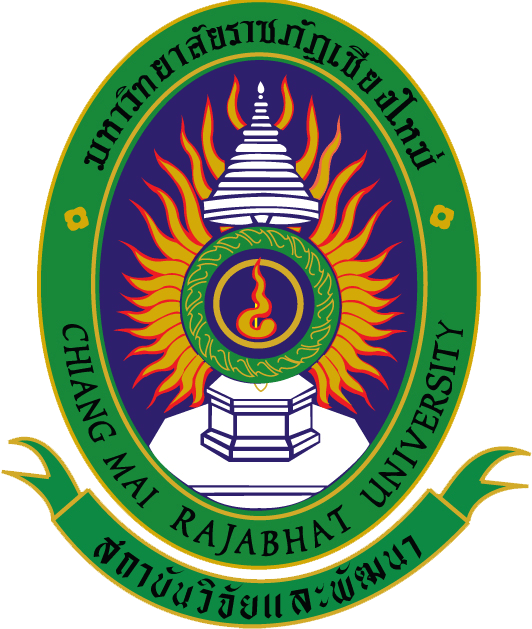
ระบบสารสนเทศงานวิจัย สถาบันวิจัยและพัฒนา มหาวิทยาลัยราชภัฏเชียงใหม่
Research Information System(RIS)
การผลิตวัสดุบำบัดน้ำบาดาลจากวัสดุเหลือใช้ทางการเกษตรและออกแบบระบบบำบัดน้ำบาดาลเพื่อการบริโภค
อาจารย์ ดร.นภารัตน์ จิวาลักษณ์
คณะวิทยาศาสตร์และเทคโนโลยี
คำสำคัญ :
เลขทะเบียน :
1357-63-SCI-TSRI
บทคัดย่อ
งานวิจัยนี้มีวัตถุประสงค์เพื่อเพิ่มมูลค่าวัสดุเหลือทิ้งทางการเกษตร โดยทำการศึกษาประสิทธิภาพในการดูดซับของถ่านไม้ไผ่ ศึกษาการเตรียมและคุณสมบัติสารประกอบโลหะออกไซด์คอมโพสิตแคลเซียมออกไซด์จากเปลือกไข่ด้วยเทคนิคทางเคมีเชิงสารละลาย อีกทั้งพัฒนาต้นแบบระบบบำบัดน้ำบาดาล ผลการวิจัยพบว่า ถ่านไม้ไผ่มีประสิทธิภาพการดูดซับโลหะในสารละลายโลหะผสมของแคดเมียม (Cd) โครเมียม (Cr) ตะกั่ว (Pb) ทองแดง (Cu) สังกะสี (Zn) เหล็ก (Fe) และแมงกานีส (Mn) ภายใต้เงื่อนไขที่ศึกษา เมื่อเปรียบเทียบประสิทธิภาพในการดูดซับของถ่านไม้ไผ่กับถ่านไม้ไผ่ปรับสภาพด้วย KMnO4 ถ่านกัมมันต์ทางการค้า และถ่านกัมมันต์ทางการค้าปรับสภาพด้วย KMnO4 ตามลำดับ พบว่าถ่านไม้ไผ่สามาถนำไปประยุกต์ใช้เป็นวัสดุดูดซับโลหะในน้ำได้โดยไม่ต้องปรับสภาพพื้นผิวด้วย KMnO4 และต้องทำการคัดขนาดของถ่านให้มีทั้งแบบขนาดใหญ่และขนาดเล็กผสมกัน เนื่องจากถ่านไม้ไผ่ขนาดใหญ่ไม่สามารถการดูดซับ Cd และ Zn แต่ถ่านไม้ไผ่ขนาดเล็กมีประสิทธิภาพในการดูดซับโละได้ทั้ง 7 ชนิด ในการบำบัดน้ำบาดาลในทางจุลชีววิทยา ได้สังเคราะห์สารประกอบ Ca(OH)2 จากเปลือกไข่ ด้วยเทคนิคโซโนเคมิคัลและการเผาที่อุณหภูมิสูง พบว่า Ca(OH)2 ที่ได้มีลักษณะเป็นอนุภาคทรงกลมขนาดประมาณ 30 nm มีประสิทธิภาพการยับยั้งเชื้อจุลินทรีย์ชนิด Escherichia coli และ Staphylococcus aureus ได้ร้อยละ 99.0 และ 96.4 ตามลำดับ และเมื่อนำ Ca(OH)2 มาเจือในผงถ่านไม้ไผ่ พบว่าสามารถยับยั้งแบคทีเรียได้ดีขึ้นเมื่อเจือ Ca(OH)2 ในปริมาณที่มากขึ้น และมีแนวโน้มในการยับยั้งแบคทีเรีย Escherichia coli ได้ดีกว่า Staphylococcus aureus จากนั้นได้นำไปทดสอบในระบบบำบัดน้ำบาดาล โดยใช้ 1.2% Ca(OH)2/Charcoal พบว่า น้ำตัวอย่างที่ผ่านระบบบำบัดมีปริมาณเชื้อจุลินทรีย์น้อยมากและไม่มีเชื้อจุลินทรีย์ที่เป็นอันตรายต่อมนุษย์ น้ำหลังการบำบัดสามารถนำไปบริโภคได้ ซึ่งอ้างอิงตาม ข้อกำหนดมาตรฐานน้ำดื่มขององค์การอนามัยโลก (WHO) ผลการศึกษาการเพิ่มมูลค่าเศษไม้ไผ่และเปลือกไข่นำมาประยุกต์ใช้เป็นวัสดุบำบัดน้ำต้นแบบระบบบำบัดน้ำบาดาลที่ได้พัฒนาขึ้น
Abstract
This research aimed to increase the value of agricultural waste material. By studying the adsorption efficiency of bamboo charcoal. Preparation and properties of metal oxide composite, calcium oxide composite from eggshell were studied. Including to develop a prototype underground water treatment system. The results of the research were as follows: Bamboo charcoal was effective in metal adsorption in alloy solutions of cadmium (Cd), chromium (Cr), lead (Pb), copper (Cu), zinc (Zn), iron (Fe) and manganese (Mn) under the conditions studied. The adsorption efficiency of bamboo charcoal with treated bamboo charcoal using KMnO4, commercial activated carbon and commercial activated carbon treated with KMnO4 were compared respectively. It was found that bamboo charcoal can be applied as a metal absorbent material in water without having to surface treatment with KMnO4 and the size of the charcoal has to be done. There are both large and small mixes. Since large bamboo charcoal cannot absorb Cd and Zn, but small bamboo charcoal is effective in absorbing all 7 types. For microbiological treatment of groundwater, Ca(OH)2 synthesized from eggshell waste by sonochemical techniques and high temperature calcination was used. It was found that Ca(OH)2 was a spherical particle with approximately 30 nm of size. The effective in inhibiting microorganisms of Escherichia coli and Staphylococcus aureus were 99.0% and 96.4%, respectively. For the Ca(OH)2 composited bamboo charcoal, the efficiency in inhibiting microorganisms was higher with increasing the amount of Ca(OH)2 adding and that tended to inhibit Escherichia coli better than Staphylococcus aureus. Then, it was tested in the underground water treatment system using 1.2% Ca (OH)2 / Charcoal. The result shown that the water after treatment was safe for human consumption, which is based on the World Health Organization (WHO) drinking water standards requirements. The results of the study of adding value of bamboo waste and Ca(OH)2 were applied as a prototype water treatment material for underground water treatment system that was developed.
ไฟล์งานวิจัย
28 27 เม.ย. 2563
สำนักงานคณะกรรมการส่งเสริมวิทยาศาสตร์ วิจัยและนวัตกรรม (สกสว.)
สำนักงานคณะกรรมการส่งเสริมวิทยาศาสตร์ วิจัยและนวัตกรรม (สกสว.) ชั้น 14 อาคาร เอส เอ็ม ทาวเวอร์ 979/17-21 ถนนพหลโยธิน แขวงสามเสนใน เขตพญาไท กรุงเทพฯ 10400
02 278 8200
callcenter@trf.or.th, webmaster@trf.or.th